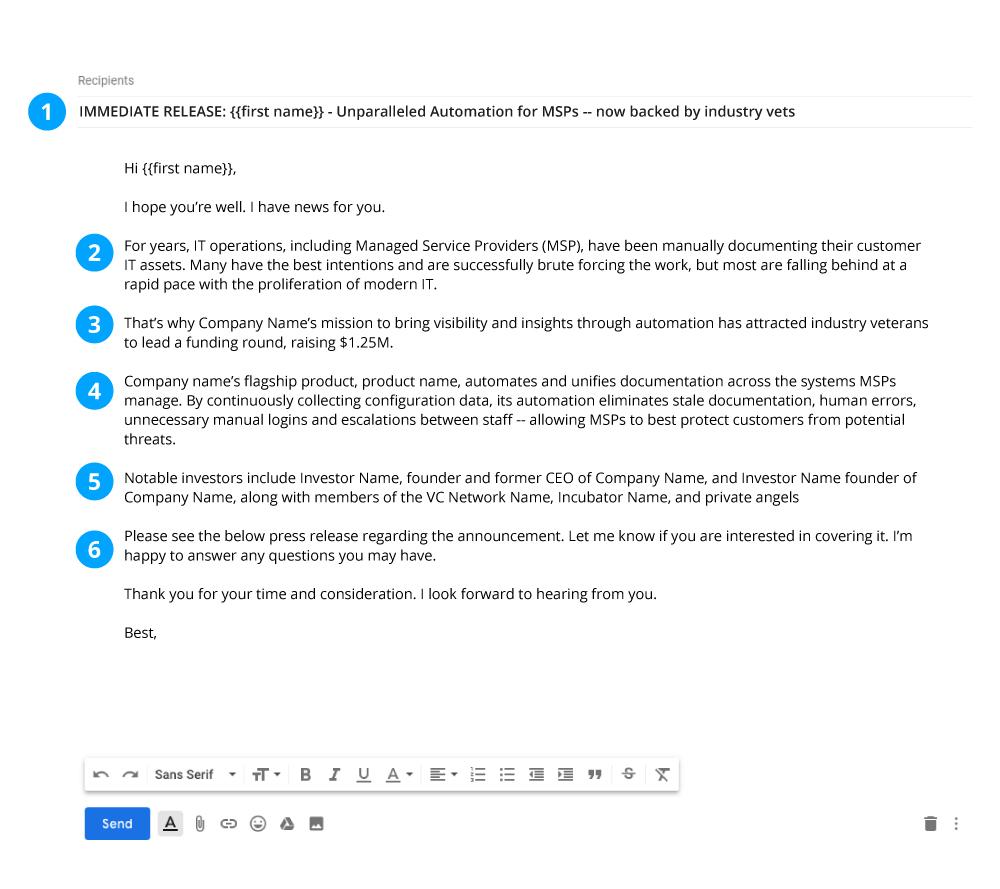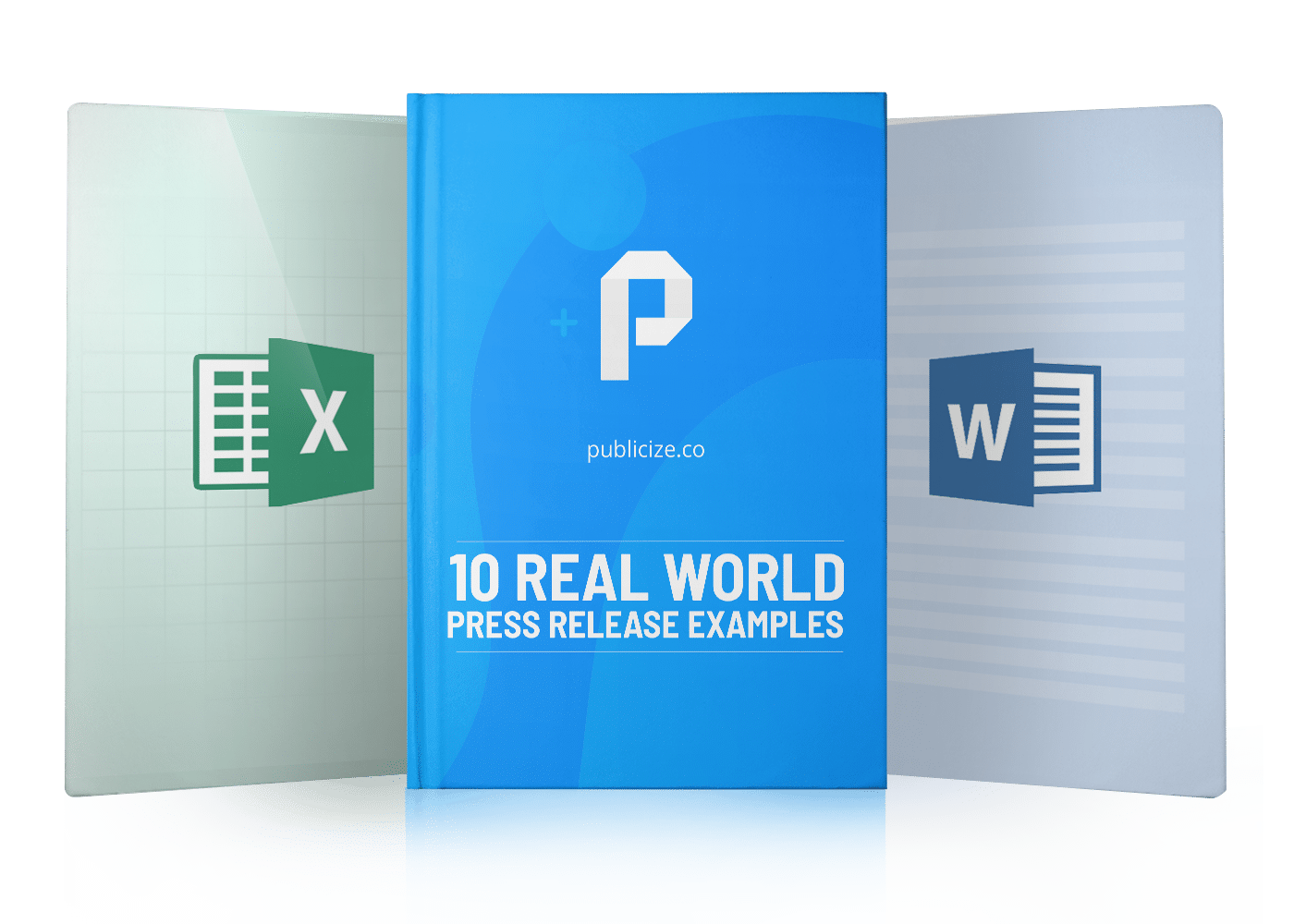One of the questions we get asked the most in public relations is how to email a press release. This seems to stump a lot of people. But the good news is that it’s easier than you probably think.
I’m guessing you’re reading this as you’ve written one and are now eager to send out a press release email to journalists in order to win media coverage. Well, when it comes to submitting a press release, you’ve got two options.
But just before I get onto that, make sure you’ve applied all the tips of the trade with our press release toolkit. After all, writing a professional quality press release will massively increase your chances of winning earned media.
Option 1 – send it to press release distribution services
In the biz, we refer to press release distribution platforms as “wire services”. These services allow you to submit your press release to them. Journalists can then browse the press releases that have been submitted, and either syndicated them on their publications or write them up into articles.
Some services also offer automatic syndication across a number of platforms, news sites, RSS feeds and Google News indexation.
Generally speaking, the better the service, the more you have to pay. While there are a number of free services, your exposure will be minimal with these platforms. Check our guide to press release submission services for more information. This includes a list of what we consider to be the best paid and free-to-use services.
Option 2 – email your press release to journalists directly
Your other option is to email a press release to journalists directly. This is often the preferred option for startups or other small businesses and organizations on a tight budget.
Find the most relevant journalists to email your press release to
The first thing you need to do is identify which journalists you want to email your press release to. So make a list of the publications and blogs that report on your industry. Many publications will provide a generic “contact us” style email address. However, it’s usually best to spend a bit of time sleuthing to identify specific journalists and then find their email addresses. This way you can send it directly to the most relevant person, which should increase your chances of success.
Do a bit of searching on each site, to find articles related to what your press release is about. Once you find these articles, note down the name of each journalist. Sometimes the website will list the journalist’s email address in the byline within the article. If it’s not there, check the contact us section, as smaller publications often list out the email addresses of all of their journalists there.
If you still can’t find the email addresses of some of the journalists you’ve identified, don’t panic! Violanorbet.com should be able to fill in the blanks for you. Just enter the journalist’s name and website URL, and the tool will then provide you with the correct email format.
Press Release Email Example
Now you’re clutching your list of journalists’ email addresses, it’s time to send your press release to them.
The most effective way to do this is to write a brief “covering letter” press release email. You can then copy and paste the press release to the bottom of the email. This is preferable to adding it as an attachment or link, as people can be wary when it comes to opening files from an unknown email.
Below is an example of how to send a press release via email, along with an explanation of why we wrote it as we did.

– Is it for “immediate release”, where any journalist can immediately publish it?
– Is it an “exclusive” where you’re just offering it to one journalist at a time?
– Or it is it “embargoed”, which means journalists can’t publish it until a certain date and time?
Once you’ve stated your release intention, include the journalist’s name in the title to personalize it, then briefly summarize the press release.
2 – 3) The Angle: Start the body of your press release email with your angle. This is where you explain how the announcement you’re making fits into the wider picture within the industry. Providing an angle like this gives journalists a much stronger reason to publish your press release, versus just sending them a bland announcement.
4 – 5) The Detail: Briefly summarize the press release here, so a journalist can see if this is relevant to them at first glance. Keep this very high level. It’s the job of the actual press release to provide the meat on the bone.
6) The Signpost: Close your email by signposting the journalist to where the actual press release is. As discussed above, it’s best to copy and paste this at the bottom of the email.
Conclusion
You’ve got two choices with how to send a press release email – you can either send it out via press release submission services, or you can email it directly to journalists. If you’re on a tight budget we recommend the second option, as it doesn’t cost anything other than your time.
To learn everything you need to know about the whole process, read our guide to press releases. This includes real-world press release examples, a walk-through on how to layout the perfect press release, and journalist etiquette tips.






